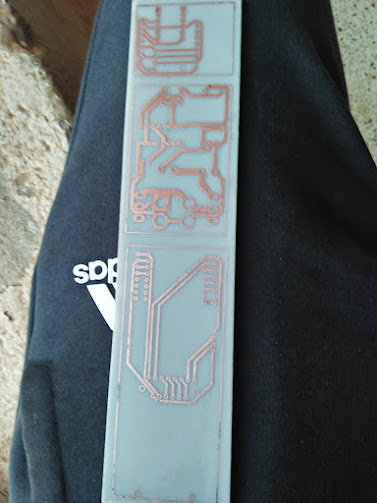STATIC FIRING TEST REPORT 16TH APRIL 2021
Motor Design
The propellant of choice was Potassium Nitrate(Oxidizer) and Dextrose(Fuel/Binder). An oxidizer to fuel ratio of 65%:35% was used. The propellant was cast into one grain with a total weight of 24g.
The grains had an outside diameter of 24mm and a core diameter of 7.2mm.
Prior to static testing a simulation using openMotor was done for a theoretical performance of the motor.
| v6 |
| v7 |
 |
| Design performance |
Motor Casing
The casing of the motor was made from 40mm PN25 UPVC. The top side(bulkhead), as well as the nozzle, were to be made from tile cement. The bulkhead for reinforced with a PVC end cap.
The nozzle was designed with the following dimensions:
Throat length - 35mm
Divergence half angle - 0 degrees
Convergence half angle - 0 degrees
Motor Fabrication
The nozzle and endcap were fabricated using tile cement(grout).
The grout is mixed with water in the ratio of 3:1 by weight and poured into the pipe. The cast is left to sit overnight. The nozzles were made by drilling the hole with a drill bit. This resulted in a straight nozzle as designed.
Static Firing Test
Results
The v7 on the other hand seemed to have a bit of failure on the end cap that might have resulted in a pressure drop. This might have been caused by an ill-fitting endcap causing burn through in the glue that attached the endcap to the casing body. This might have caused a performance reduction in the motor.
Recommendations
- Record data only after the motor has been fired to reduce the time taken to comb through the data.
- Only use metric end caps for closure on the bulkhead as imperial ones don't form a great fit.
- Precalibrate the test stand load cells to reduce turn around time before firing.









Comments
Post a Comment